Understanding the frog in your throat
Bailey and Bed Rock considerations—what’s the difference?
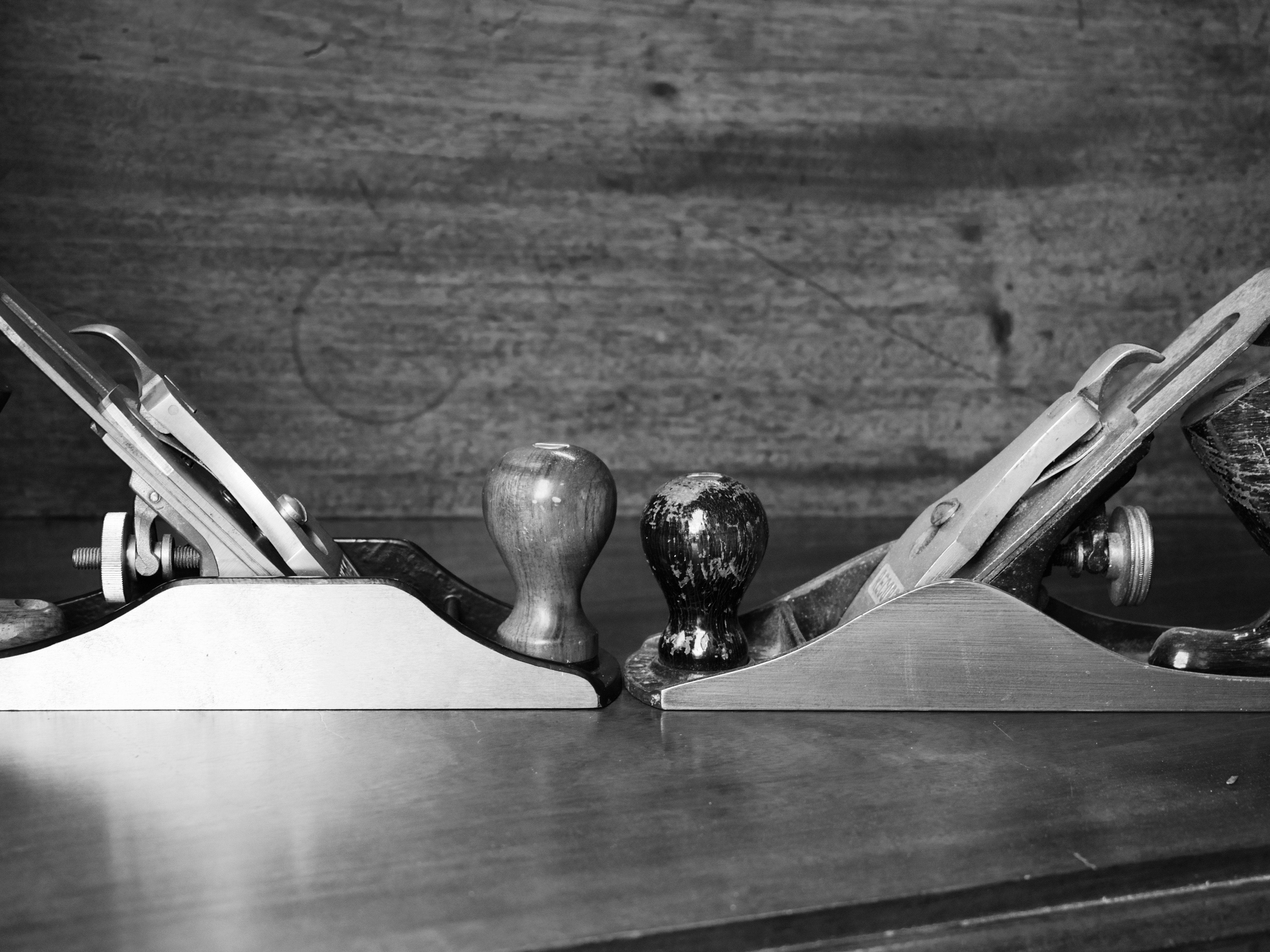 I have addressed some of the issues surrounding the differences between the Bailey-pattern cutting iron assembly and adjustment and the Bed Rock type. Obviously this surrounds the entire frog of both units. All adjustment is anchored solidly to this central hub so critical to the two plane types that were originally made as production lines by the Stanley Rule & Level Company in the USA back in the late 1800’s.
I have addressed some of the issues surrounding the differences between the Bailey-pattern cutting iron assembly and adjustment and the Bed Rock type. Obviously this surrounds the entire frog of both units. All adjustment is anchored solidly to this central hub so critical to the two plane types that were originally made as production lines by the Stanley Rule & Level Company in the USA back in the late 1800’s.
The cast metal frog on each model holds the entire cutting iron assembly comprising both cutting and cap irons and also, when fitted, the lateral adjustment lever, the depth adjustment knob and the frog itself, the purpose of which is to adjust the frog back and forth in relation to the fore part of the plane’s sole. It’s this adjustment capability that alters the narrow opening across the plane’s sole between the very cutting edge of the iron and the front aspect to the plane’s sole. I want to address it from my perspective as a free agent and a free craftsman taking no sponsorship from tool makers, catalog companies and so on, and one who never sells new planes (but perhaps an odd older plane to a desperate student perhaps once every two years).
My experience with the two types
Of course I have used both plane types as #4 and #4 1/2 versions in my daily woodworking over my 50 years as a full-time woodworker. Every day I’ve reached for one or another of the bench planes dozens of times an hour and this of course includes the ever-famous Bailey pattern and the lesser used Bed Rock patterns, both of which were made by Stanley and nowadays all of the other modern makers that copied Stanley’s original regardless of the original designers. The contrasts between the two model types have brought up different issues that are rarely spoken of but are important to a working knowledge of the planes in functionality and use and because they’d affect the plane’s performance in different ways.
Two frogs in the throat
Hopefully you will now understand that the two frogs of the Bailey and Bed Rock types are remarkably different even though their primary functions are actually identical. That said, both frogs function quite differently but only in the single factor of opening and closing down the gap forming the throat; so differently one must ask the question, just what is it that makes the difference and what are the actual differences?
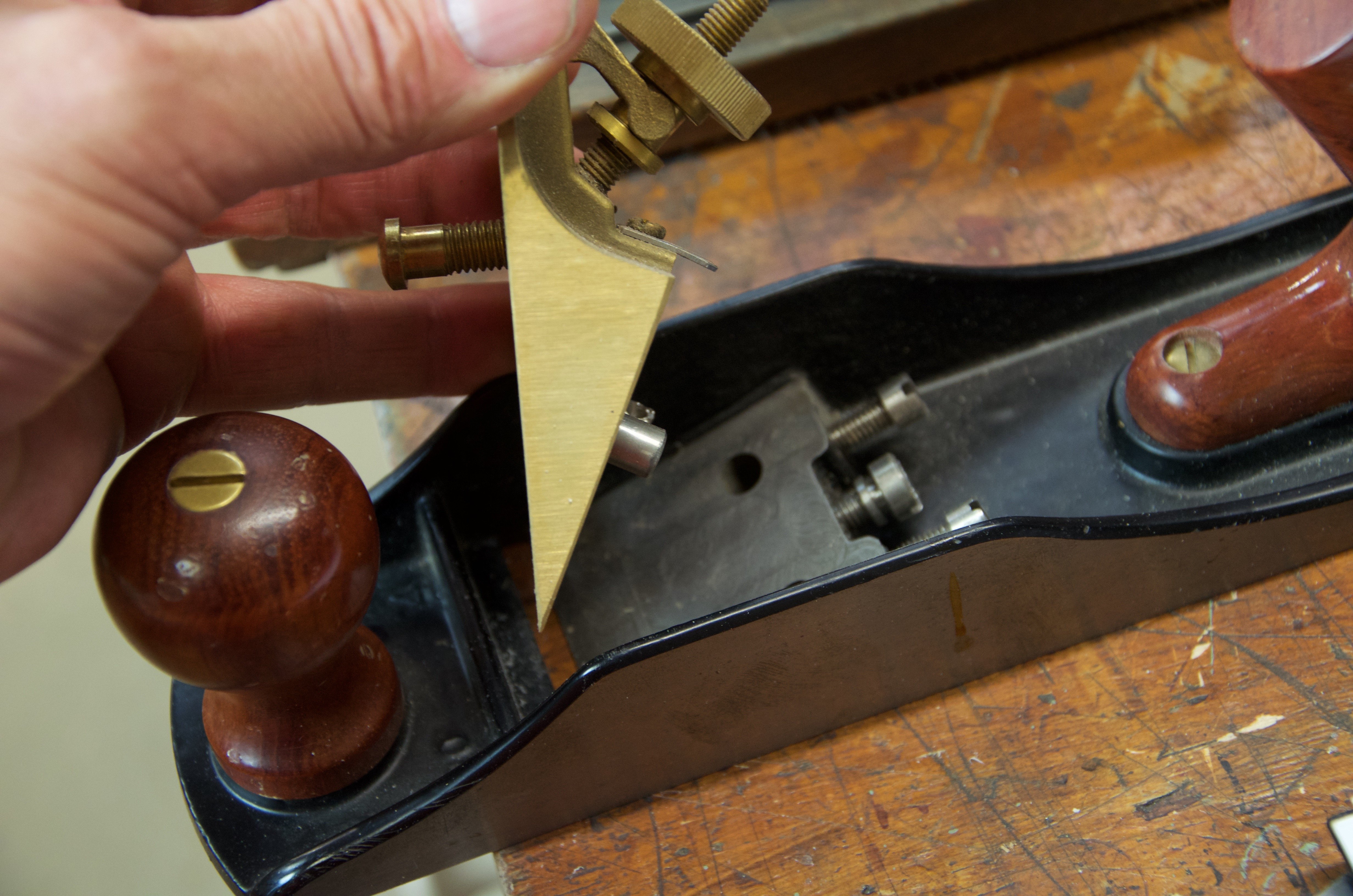
Regardless of the plane type, a frog too tight in the throat leads quickly to choking if the depth of cut is even a fraction too much or the cap iron is set too tight (close) to the cutting edge chokes easily no matter the type. 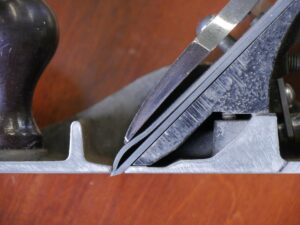
What frogs are good for
Both frogs work close to equally well, and do what they are designed for. Lets look briefly at the things that the frogs do identically and then consider the interrelationships we still rely on afterwards. First of all it’s worth reiterating here that the frog holds the key elements surrounding every physical aspect of the adjustments of the plane. We must understand that this is fact. Here are the functions of the plane frog:
One: One of the frog’s primary function as a separate entity to the sole is to carry the lateral adjustment mechanism and the depth adjustment mechanism. See pic above.
Two: The frog itself allows the closing and opening of the throat.
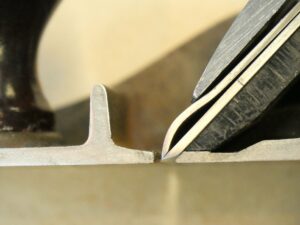
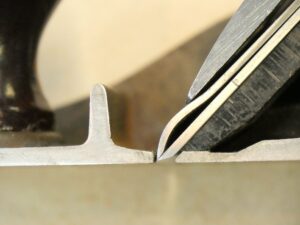
This being fact, let’s look at these functions:
Adjustment I—Alignment
The lateral adjustment lever to each plane aligns the blade to the sole in identical manner and therefore operate the same way. Tilt the lever to one side and the blade pivots near the centre canting the blade in the opposite direction at the cutting edge to align it parallel to the plane’s sole. Depending on the manufacturer, they are basically made the same way and there is little more to be said on this point.
Adjustment II—Depth of cut
The depth of cut controlled by the adjustment wheel is also identically arranged and needs no more consideration right now. Turn the wheel clockwise and you advance the cutter down into and through the mouth for a deeper cut. Reverse this and the iron comes back up and so you have thinner shavings with the shallower set of the iron.
Adjustment III—Mouth opening
The only remaining adjustment then is the distance between the cutting edge of the plane iron cutting edge and the front portion of the sole.
More than just the throat opening
So now at last we see and understand that there’s more to the frog than just throat openings. Understandably so, I think any new woodworker can be forgiven for thinking the frog only moves backwards and forwards to open and close the throat when in fact it’s other equally important function is to carry the adjustment mechanisms. The frog’s function is to indeed multitask; in relation to the lateral adjustment and the depth control knob, the throat opening control in terms of essentiality and functionality is generally quite minimal. Why do I say that? Well, let me open things up in the day to day work of a practicing craftsman.
Life in the real—real workbench woodworking
In the day to day of woodworking and making at the bench most hand tool woodworkers use wood they have picked through carefully for grain type and grain orientation, knowing that every surface must be hand planed for perfection to exist and then, further, to be ready for joint making, fitting, trimming and finishing. Most wild grained wood is mostly avoided except for decoration because it’s hard to find good balance and so this wood type is scarce, even rare and not normal. In other words flamboyant grain used in furniture can be less desirous except perhaps as a decorative element limited in parts to the whole.In the real world of being a furniture maker we look for something very different that brings full balance to the work. We look for grain types that are perhaps more even in pattern and colour. Configuration and matching is indeed an art in and of itself. Mismatch here and you end up with a piece that doesn’t sell. If one chair is too figured and the others less then the chair creates an imbalance with its brothers and sisters. That being the case, we’re looking for something very much more normal to work with.
Let’s look at the frog in it’s singular role then.
You might be forgiven if you have the impression from different sources that the frog is constantly being adjusted according to any grain you might encounter. It’s not. I can tell you that frog adjustment with regards to throat opening is actually quite insignificant, of minimal value and more of conversational interest than practical. I can also tell you that throughout my apprenticeship as a boy I never saw any man alter the frog setting to close the throat of the planes they used. Thinking further about this just for a minute you might question what happened before the arrival of these cast metal plane types. Always remember too that the one who frames the issue determines the outcome. Wooden bench planes throughout the world had no throat adjuster at all and the metal plane throat adjustment only arrived in the latter part of the 1800’s. To the uninitiated anyone might think that today’s woodworker has become dependent on this added feature, but I venture to suggest that 95% of woodworkers have no reason to adjust the throat opening and 95% of woodworkers don’t use this extra so much to adjust the throat opening but to hold all of the adjusters. Take the trouble to ask around and you actually don’t find many real woodworkers working very much with the frog altered at all. Once you set your frog you will most likely leave it as it works best for your general woodworking. Then, when you encounter any type of wild grain, you will most likely do what we all do and that’s reach for a good old #80 cabinet scraper to tackle the rebellion.
Hopefully you can now see that it’s too much of a faff to alter the frog of the plane to tackle isolated pockets of wild grain and that’s for sure. In reality I think that I could use my planes for the next 20 years getting the pristine results I demand with the frog set to it’s very normal back position where the heel of the plane iron is pressed equally against the plane sole and thus perfectly aligning with the face incline of the frog. You must see here then that in this position the frog becomes immovable because the heel of the iron is firmly seated against the sole which removes all pressure on the frog itself. Hence no chatter is actually possible.
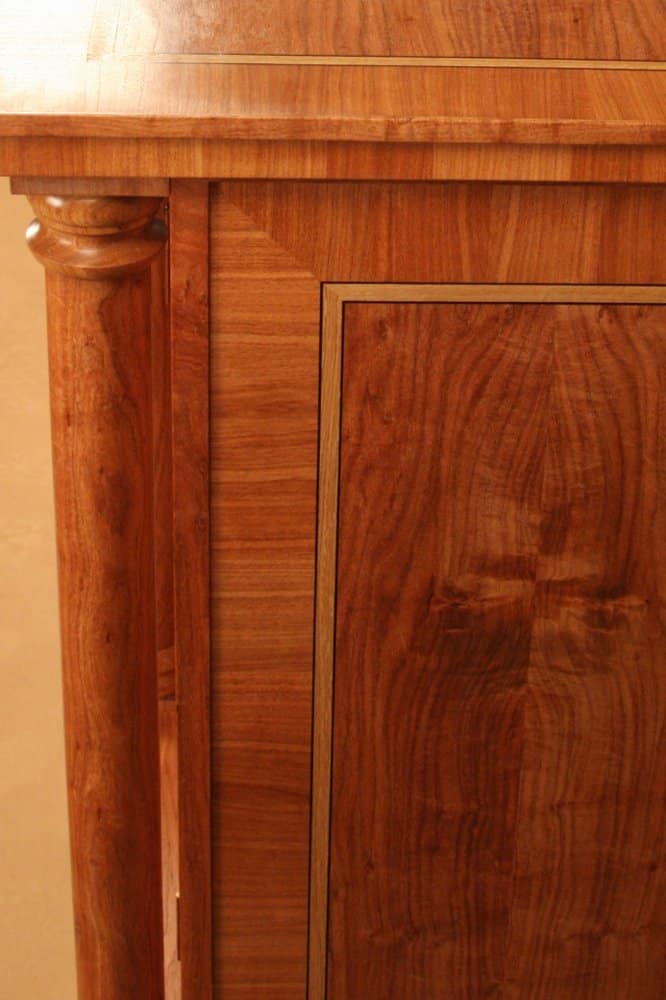

Now then, where do I use the plane with the throat more closed than wide open? Sometimes, as in the case of working on the White House cabinets we made for the Cabinet Room, the veneers we used were 3mm thick. Some of these veneers were 15mm to 50mm wide with diverse and alternating grain directions. This effectively made hand planing difficult but not impossible. On this work I closed the throat down to narrow, leaving the throat opening between the cutting edge and the sole about .5mm. When planing guitar wood or the bouts for violins and cellos, where the wood is 2mm or less thick, and the wood is planed quite differently than say thick sections of wood, it’s also best to close down the throat. Curly maple and other such figured woods are not usually difficult woods to plane at all, even though they do look to be so. It’s a surprise to most people, and sometimes offensive to others, then, when I tell people that a plain old plane like a non retrofitted Stanley does the trick on such woods just fine.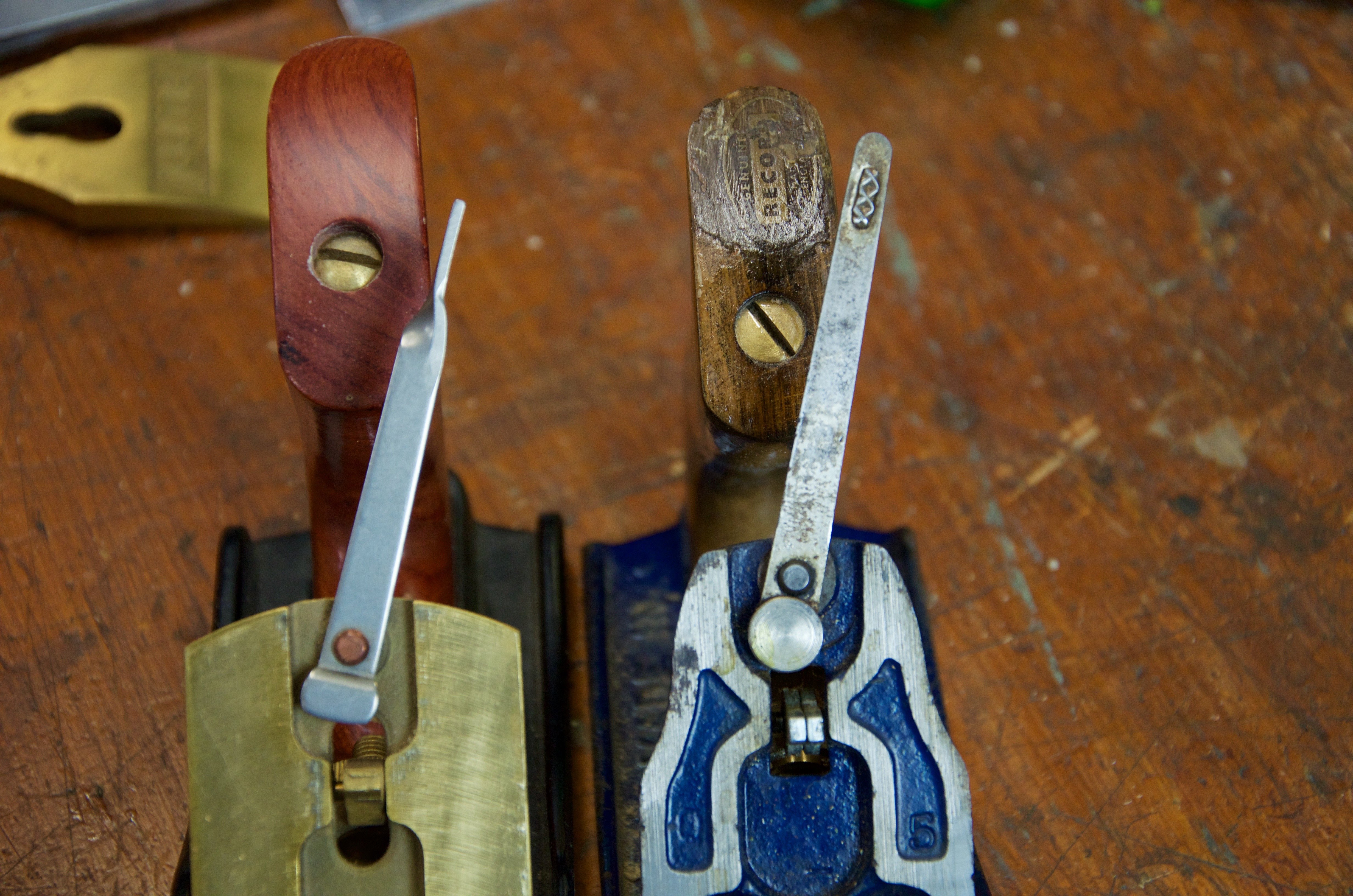
Part II shortly…all being well.


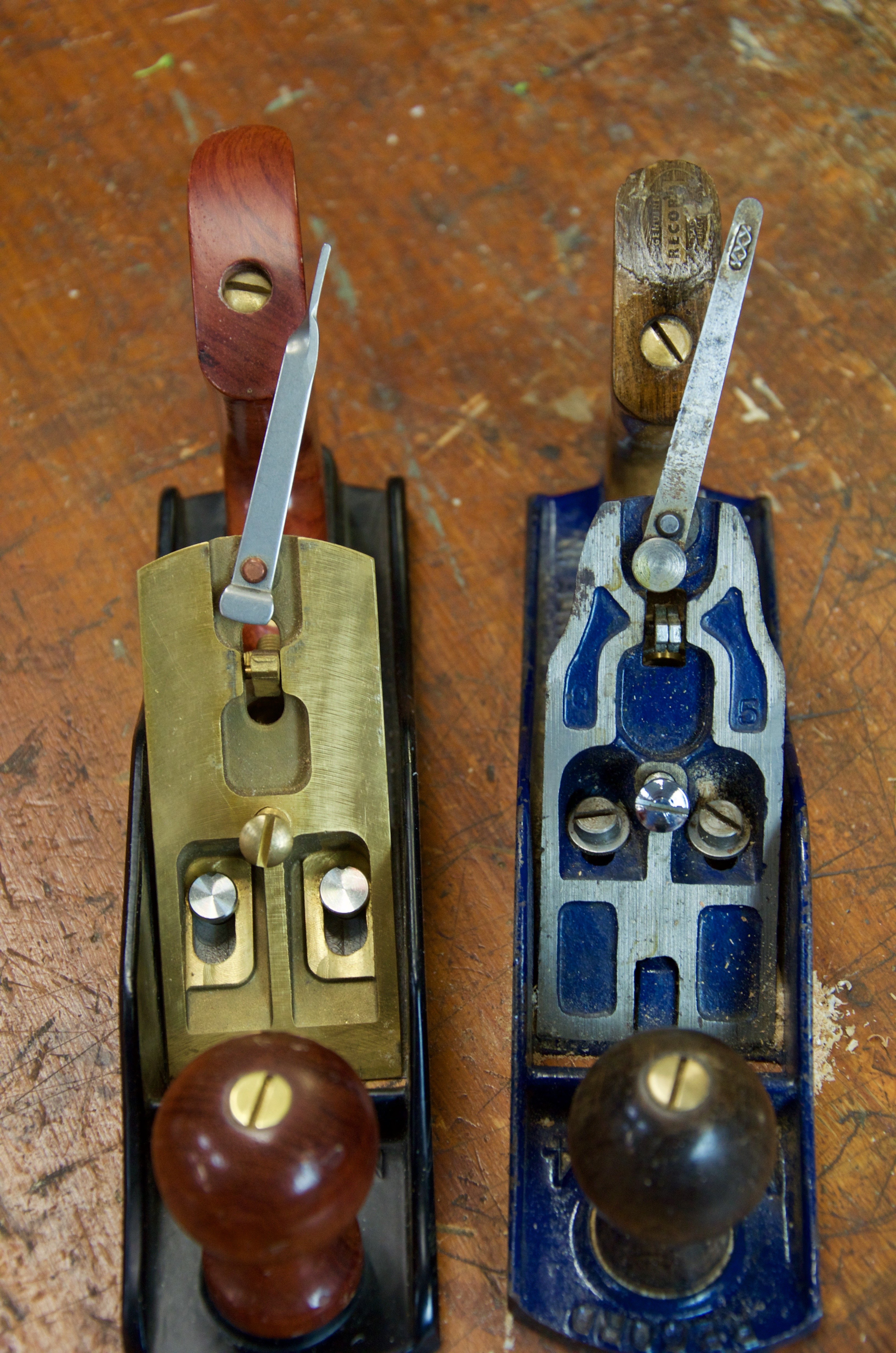
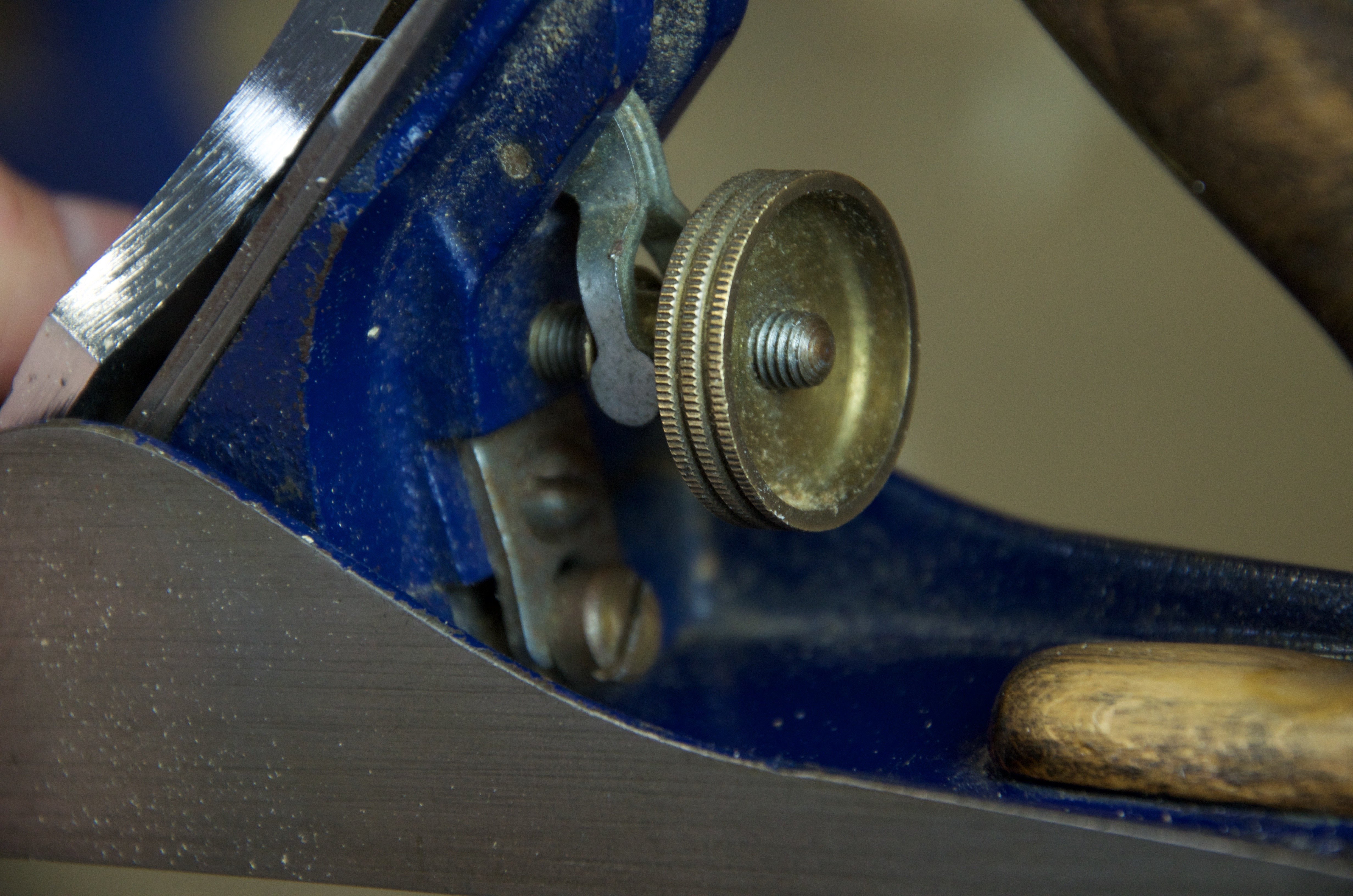
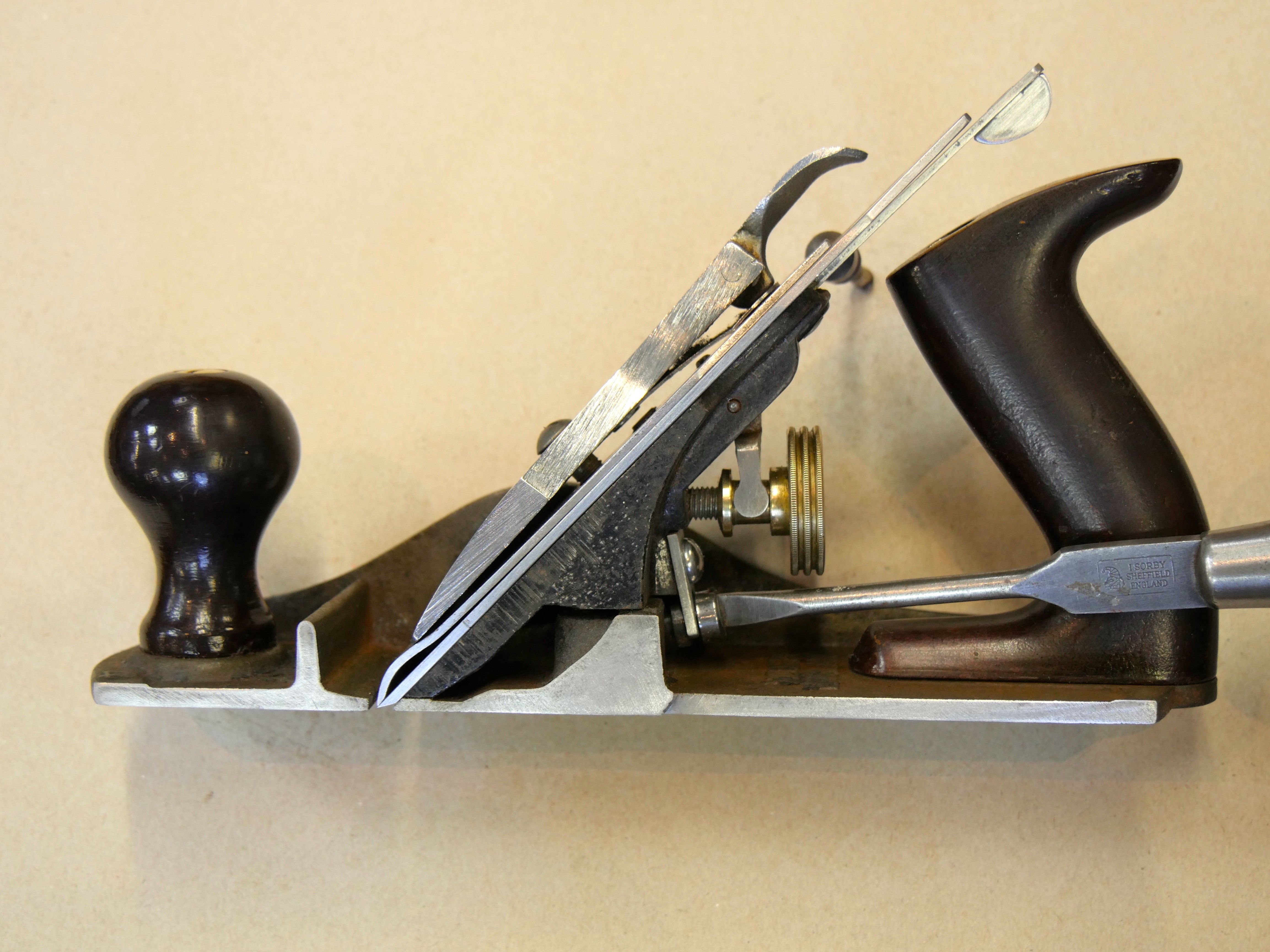

The cut away photos of the Bailey pattern plane are very informative, especially showing the limits to variation in the setting of the frog. I was wondering at first where you got those images from, whether they were perhaps marketing from Stanley, then I spotted the I. Sorby screwdriver and realised that it must have been you who cut up an old plane (most of the paint missing) and took those clear photographs. Brilliant!
And, thank you!
Probably like every other woodworker the only time the frog has ever been moved on my plane is when the plane is given a “damn good” clean up, or just because.it can be undone. I’m struggling to remember if anything like this detail about plane adjustment was ever mentioned during my apprenticeship back in the early 1970’s. If it was, it was only as a passing comment. I feel like I’m doing an apprenticeship over again seeing and reading your videos and articles such as this.
Thank you Paul for the very informative and interesting blog on this subject,with crystal clear photo’s showing the minute detail when fully magnified. I’m waiting for your next installment.
Just as a wee point of information – the Bailey type plane did not originate in the Stanley Rule and Level drawing office, but was patented and first produced by a chap called Leonard Bailey (hence the name ‘Bailey plane’ or ‘Bailey pattern plane’. Bailey’s patent rights were bought by Stanley, and they subsequently introduced a whole string of minor changes and ‘improvements’ including the Bedrock type. When the patent expired, several companies (notably C&J Hampton – Record – in the UK) began producing planes of very similar design.
Thanks for this. I’ve made the adjustment.
As regards the frog position, you say: “the frog set to it’s very normal back position where the heel of the plane iron is pressed equally against the plane sole and thus perfectly aligning with the face incline of the frog. You must see here then that in this position the frog becomes immovable because the heel of the iron is firmly seated against the sole which removes all pressure on the frog itself. Hence no chatter is actually possible.”
I wonder if some caution or clarification is necessary here as I’ve acquired two used Stanley 4 1/2s (different suppliers), both with small cracks at the rear corners of the mouth which exactly match the width of the iron. What I suspect has happened is that the frog has been set too far back, with the iron resting against the sole (mouth edge) and unsupported by the frog. Thus, when a hard obstruction is met (e.g. start of cut, knot) the iron strikes the rear of the mouth causing the fractures.
Would it not be best to have the frog support the iron? Any chatter might be caused by other factors e.g. insufficient lever cap pressure, iron/frog not mating properly?
99% of mouth cracks to the side or sides of the plane throat occur because of droppage onto something hard like concrete. This is not an unusual occurrence, we’ve all done it. I would say that 1 out of three such drops result in breakage. I hear what you are saying about creating tension, but I have not seen such a thing occur, which is not to say it couldn’t add to a dropped plane issue combined with your offering.
Hello Paul!
Please could you give your opinion concerning Veritas bevel-down handplane concerning their frog?
thank you for your thoughts. when I was in high school, los angeles school district they had industrial arts classes. they have long since been eliminated. I do not know if it was because of cost of equipment, insurance or god only knows what bureaucratic reason. there is that much less reason now for a person to be interested in doing any type of building or fabrication work. what ever happened to a person being proud of what they could do with their hands ?
Thank you Paul. I have been using planes, and setting them, thinking I was aware of what each part does. But never have I understood the importance, that a correctly positioned frog has for the overall performance of the tool.